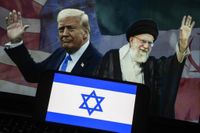On the heels of a violent June 2025 conflict, the announcement that Iran and the United States could soon enter Norway-mediated talks has drawn global scrutiny and reignited debates about the future of diplomacy, war, and peace in the Middle East. According to Iran’s state-run Tehran Times, sources familiar with the matter revealed on Friday, August 9, that indirect talks might begin as early as this month, with Norway stepping in as mediator. The discussions, if they proceed, are set to address two of the most contentious issues of recent months: Iran’s nuclear program and Tehran’s demand for compensation over damages inflicted during the June war with Israel and the United States.
The proposed talks come after a tumultuous summer marked by devastating airstrikes, retaliatory missile attacks, and the suspension of previous diplomatic efforts. Between April and May 2025, Iran and the U.S. had already engaged in five rounds of discussions in Muscat, Oman, and Rome, Italy. Hopes for a sixth round, scheduled for June 15 in Muscat, were dashed when Israel launched airstrikes on Iran just two days earlier, triggering a 12-day conflict that left hundreds dead and diplomatic channels in tatters.
During the June hostilities, the United States joined Israel in striking Iranian nuclear facilities at Isfahan, Natanz, and Fordow, while Israeli forces targeted critical infrastructure, resulting in the deaths of several senior military and scientific figures and hundreds of civilians. Iran’s response was swift and deadly: missile strikes that killed at least 27 Israeli civilians. The violence reverberated beyond Iran and Israel, fueling instability in neighboring countries like Iraq and Lebanon and stoking anti-American sentiment across the region, as highlighted by Middle East Monitor.
Norway’s involvement as a mediator is not without precedent. The country’s Deputy Foreign Minister, Andreas Kravik, visited Tehran in early August and met with Iran’s Foreign Minister Abbas Araghchi. Although the official readout of the meeting made no mention of nuclear talks, Tehran Times connected the trip to ongoing mediation efforts. Notably, Norway was among the few Western nations to join 120 countries in condemning Israel’s June strikes on Iran, a stance that may bolster its credibility as a neutral broker.
Yet, the prospect of renewed diplomacy is complicated by deep mistrust and sharply divergent narratives. Iranian President Masoud Pezeshkian, speaking on Saturday, August 9, accused the United States of guiding and supporting Israel’s June strikes. He asserted, “When it comes to the security and independence of the country, all differences fade and the principle is Iran,” emphasizing a rare moment of unity among Iran’s political factions in the face of external threats.
On the other side of the Atlantic, U.S. President Donald Trump doubled down on his administration’s hardline approach. In remarks delivered Wednesday, August 6, Trump called Iran “a very evil place” and credited American action with preventing wider wars in the Middle East by “stopping Iran from having a nuclear weapon.” He warned, “If Tehran restarted its program, we’ll be back as soon as they start.” The U.S. government has also flatly rejected Iran’s demand for compensation for war damages, with State Department Principal Deputy Spokesperson Tommy Pigott dismissing the claim as “ridiculous.” Pigott added that Tehran should instead “stop funding terrorist death squads” and “stop wasting money on a nuclear program that isolates them further.”
Such rhetoric underscores the entrenched skepticism—and, some would argue, hostility—that continues to define U.S.-Iran relations. The June 2025 conflict, far from resolving underlying disputes, has only deepened divisions and complicated the path toward peace. According to an opinion piece published by Middle East Monitor on August 9, the U.S. airstrike on Iran’s nuclear facilities was framed as a step to halt a looming nuclear threat and stabilize the region. However, the article contends that this action is emblematic of a broader American strategy that uses war as a tool to maintain dominance, often at the expense of genuine diplomatic solutions.
The opinion piece draws parallels to previous U.S. military interventions in the Gulf Wars and the occupations of Iraq and Afghanistan, arguing that “military interventions have consistently been justified with slogans of democracy and security.” In reality, it asserts, force is often used not to resolve conflict but to manage it, with consequences that outlast any tactical gain. The June strikes, it claims, escalated regional tensions, emboldened hardliners, and “fractured diplomatic channels,” making sustainable peace even more elusive.
For many in the Middle East, the aftermath of the June conflict has been anything but stabilizing. The attacks have strengthened resistance groups, widened the scope of confrontation, and left neighboring countries to grapple with the fallout. As Middle East Monitor observes, “Dialogue was cut off. Negotiation windows slammed shut. The result: a region more volatile than ever, with the US seen less as a broker of peace and more as a participant in the chaos.”
The global repercussions are equally troubling. The strikes have, according to the opinion piece, “struck at the foundations of international law,” further weakening institutions like the United Nations and sending a message that “might still makes right.” The normalization of militarized solutions, it warns, is fueling a global culture of violence and encouraging other nations to accelerate their own militarization. At the same time, the so-called “war economy”—where increased defense spending and corporate revenue follow in the wake of conflict—remains firmly entrenched. The article notes, “Iran’s bombing boosted defense spending and corporate revenue, underlining the uncomfortable truth: war is good business.”
Perhaps most damningly, the piece laments the erosion of diplomacy, arguing that the Iran strike “all but destroyed hopes of reviving the nuclear deal.” Instead of creating space for dialogue, it intensified confrontation and replaced conversation with coercion. The result, it argues, is a world where “peace no longer seems plausible, only delayable.”
These criticisms are not limited to left-leaning or anti-war voices. Some American foreign policy experts, while defending the necessity of containing nuclear threats, acknowledge that repeated reliance on military force risks undermining long-term U.S. interests and global credibility. Others point out that the Trump administration’s approach—characterized by sanctions, threats, and military action—has left little room for compromise and may have inadvertently strengthened Iran’s hardliners.
As Iran and the United States weigh the possibility of Norway-mediated talks, the stakes could hardly be higher. The outcome will not only shape the future of nuclear diplomacy but also influence the broader trajectory of peace and conflict in the Middle East. Whether this moment marks a turning point toward dialogue or yet another missed opportunity remains to be seen. For now, the world watches—and waits.




